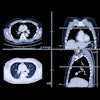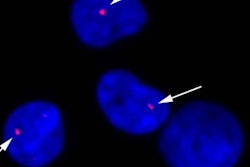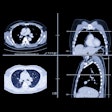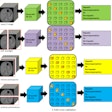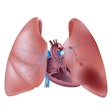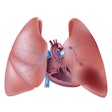
Is medical imaging making headway in its efforts to reduce patient exposure to medical radiation? In an update to its report on radiation exposure, the U.S. National Council on Radiation Protection and Measurements (NCRP) found that the average medical radiation dose has decreased by 15% to 20% over the past decade.
The NCRP's prior report on radiation showed a sixfold increase in dose from the early 1980s to 2006. In contrast, the latest NCRP report indicated that the average radiation dose patients are exposed to has either fallen or stayed stable between 2006 and 2016 for most relevant diagnostic and interventional exams.
To be specific, the estimated effective dose per person decreased from 0.3 mSv in 2006 to 0.22 mSv in 2016 for radiography and fluoroscopy, from 0.73 mSv to 0.32 mSv in nuclear medicine, and from 1.46 mSv to 1.37 mSv for CT.
The report also showed that CT accounted for 63% of the collective effective dose in 2016, up from 50% in 2006, whereas the percentage fell for most other imaging modalities. Though the total number of CT scans acquired increased by 20% in the 10-year period, the overall dose per person remained roughly the same.
This trend toward a decrease in patient radiation exposure from medical imaging exams likely stems from a combination of factors, including advances in imaging technology and efforts led by radiology groups, according to the report.
Awareness campaigns such as Image Gently and Image Wisely, mandatory accreditation of imaging facilities by Medicare, growing use of the American College of Radiology (ACR) dose index registry, and the push by radiology leaders to advance low-dose imaging technologies have all contributed significantly to the overall reduction in radiation dose, the ACR said in a comment on the report.
The pending federal mandate that would require providers to consult appropriate use criteria before ordering imaging exams for Medicare patients may further help reduce radiation dose, the ACR noted.
"We are pleased, but not surprised, that despite a steadily increasing and aging population, the medical radiation dose Americans receive is going down," ACR CEO Dr. William Thorwarth said. "The radiology community continues to evaluate additional opportunities to further reduce both collective and individual doses while advancing the contribution of imaging to high-quality care."
